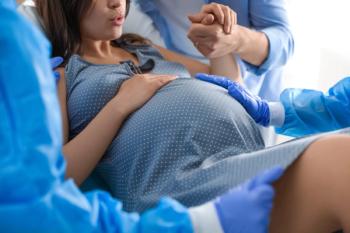
Cannabis use and prenatal depression
Women with depression are more than three times more likely to use cannabis while pregnant, according to a recent study from Drug and Alcohol Dependence.
Women with depression are more than three times more likely to use cannabis while pregnant, according to a recent
Methods
The study involved data from public-use data files from the
Depression was assessed in participants based on the
Findings
The authors found that 6.8% of pregnant women (95% CI 6.2%-7.5%) were categorized as having MDE. Just over 12% of pregnant women with MDE reported past-month cannabis use, while 23.7% of pregnant teens aged 12 to 17 years with MDE reported past-month cannabis use. Pregnant women with MDE were more than three times more likely to use cannabis during pregnancy than women without MDE (12.7% vs 3.7%; OR 3.8 (95% CI 2.8-5.0). Pregnant women with MDE were more likely to use cannabis during pregnancy than those without MDE across all sociodemographic subgroups.
The authors found no significant variation in the strength of association between MDE and cannabis use among pregnant women by age, marital status, income or education. However, the relationship between MDE and cannabis use was significantly stronger among non-Hispanic white vs black women (OR 3.8 [95% CI 2.6-5.4] vs OR 1.8 [95% CI 0.9-3.7], Pint= 0.0089). The authors noted that the number (n = 16) of black women was too small for the results to be considered reliable. The relationship between depression and cannabis use was significantly stronger among those who perceived moderate-great risk associated with use vs those who perceived no risk (OR 6.9 [95% CI 3.7 – 13.0] vs OR 1.6 [95% CI 1.1 – 2.4], Pint= 0.0003).
Conclusions
Based on their findings, the authors believe that pregnant women with depression are much more likely to use cannabis than women without depression. They noted that women may choose to self-medicate with cannabis due to a lingering perception that antidepressants are not safe during pregnancy. While they acknowledged that more research is necessary to determine whether their results are replicable, the authors urged health care providers to screen for depression and cannabis use among all pregnant women and target cannabis cessation intervention and depression treatment toward women with co-occurring risks.
Newsletter
Get the latest clinical updates, case studies, and expert commentary in obstetric and gynecologic care. Sign up now to stay informed.
















